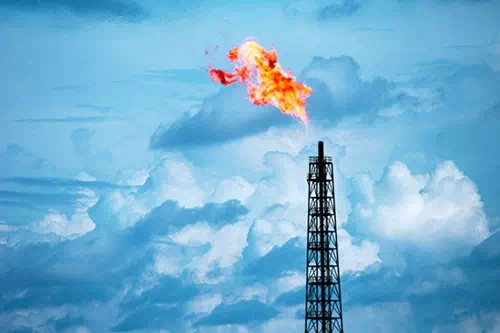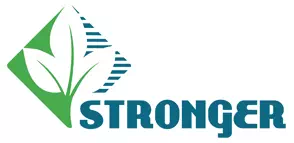

|
Safe Drinking Water Act Overview The Safe Drinking Water Act (SDWA) is the primary federal law that ensures the quality of Americans' drinking water. Under SDWA, the U.S. Environmental Protection Agency (EPA) sets standards for drinking water quality and oversees the states, localities, and water suppliers implementing those standards. Also administered under the SDWA is EPA's Underground Injection Control (UIC) Program, which regulates the construction, operation, permitting, and closure of injection wells that place fluids underground.. Among the UIC Program's objectives are to:
SDWA's Effect on Oil and Natural Gas Exploration and Development There are two segments of the SDWA that are most likely to impact oil and natural gas exploration and development: Each of these aspects of the SDWA is discussed below. Under the SDWA, EPA establishes minimum standards for tap water supplied by public water systems. A public water system is defined as a water system that has 15 service connections or regularly serves 25 individuals for at least 60 days per year. Public water systems obtain their water from two sources: groundwater and surface water. Depending on the quality of the source water, pre-treatment may be needed prior to distribution to the public for consumption. The SDWA's primary regulatory mechanisms are the National Primary Drinking Water Regulations, which identify maximum contaminant levels (MCLs) or treatment techniques generally on a contaminant-by-contaminant basis. MCLs and treatment techniques are generally based on the potential for toxicity to humans and the feasibility of detection and water treatment. Not all potential contaminants are regulated under this program, however, SDWA mandates an ongoing program for evaluation and regulation of new contaminants found in drinking water. The SDWA's National Primary Drinking Water Regulations may apply when hydraulic fracturing or other oil or natural gas production activities impact a public water system's supply (e.g., during release cleanup or pre-treatment of groundwater or surface water sources contaminated by exploration or production activities). However, these regulations do not apply to the oil or natural gas extraction and production activities themselves. The SDWA also requires EPA to regulate the construction, operation, permitting, and closure of injection wells that place certain fluids underground through the Underground Injection Control (UIC) Program. Oil and natural gas operators use injection wells for three purposes:
There are six categories or "classes" of injection wells (i.e., Classes I through VI as defined in 40 CFR 146.5). Each class is distinguished by the fluids injected, activities, construction, injection depth, design, and operating techniques. Oil and natural gas operators primarily utilize Class II wells. The UIC regulations can be found in 40 CFR 144-148. Natural gas exploration/development primarily involves the first two uses described above (disposal of wastewaters and enhanced recovery), but generally not hydrocarbon storage wells. Within these two uses, key areas subject to regulation under the UIC program include:
These two aspects of the UIC program are discussed below. Underground injection (use) of fluid that contains diesel fuels during hydraulic fracturing. Underground injection (as revised by 2005 Energy Policy Act, see section 1421(d)(1)(B)) means the subsurface emplacement of fluids by well injection and excludes:
Therefore, as specified in the language above, while the SDWA specifically excludes hydraulic fracturing from UIC regulation under SDWA Section 1421 (d)(1), the underground injection of fluid that includes diesel fuel during hydraulic fracturing is still regulated by the UIC Program. Diesel fuels may contain a number of chemicals of concern including benzene, toluene, ethylbenzene, and xylene compounds (BTEX) that are highly mobile in ground water and are regulated because of the risks they pose to human health. For a discussion on what constitutes diesel fuels, please see the EPA Guidance on Diesel Fuels Hydraulic Fracturing. Under the UIC Program, the following requirements apply to underground injection related to hydraulic fracturing:
UIC Program - Summary of Requirements EPA (or the primacy state or tribe) may authorize Class II well injection through one of two mechanisms:
The UIC Program operates by establishing protective requirements that allow for the safe injection of fluids underground. Below is a summary of the main UIC Class II well requirements, as outlined in 40 CFR Part 144, 40 CFR 146 and 40 CFR 147 that the injection well must meet:
UIC Program - State and Tribal Authorization Many federal environmental laws allow states and tribes to develop programs for implementing the law in their jurisdiction. When a state or tribe submits a complete application and EPA has reviewed the state or tribal program, EPA may approve the state program. After EPA approves a program, the state or tribe gains primary enforcement responsibility; EPA retains oversight and enforcement authority. The UIC Program, including all six well classes, is designed to be adopted by states, territories, and tribes (40 CFR Part 145). Specifically related to Class II wells, state and tribes have the option of requesting primacy for Class II wells under either Sections 1422 or 1425 of the SDWA. For a list of primacy states and tribes, see EPA's Who currently has primacy? Visit the Indian Country Resources page for more information on engaging in oil and natural gas extraction activities in Indian country.
|
Funded by EPA through a Cooperative Agreement
|
 |
||
About | Technical Topics | Federal Statutes & Regulations - US EPA | Federal Statutes & Regulations - Non-EPA | Emergency Response |
|
EPA Resources | State/Local Resources | Other Resources | Acronyms | Search | Disclaimer | Home



